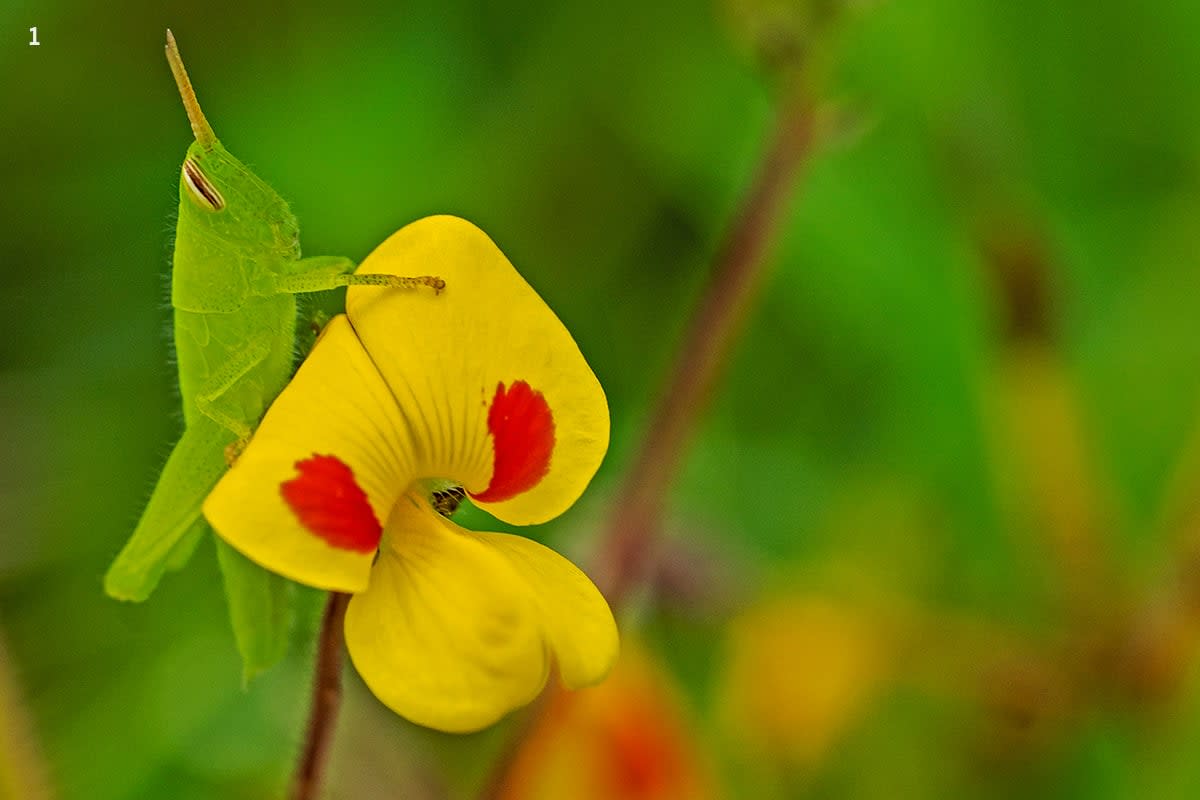 Listen to this article
•
15:34 min
Listen to this article
•
15:34 min
As one of the world’s top biodiversity hotspots, the Western Ghats are known for a staggering range of flora and fauna. There’s no better time than the monsoon to experience the forest at its fullest, when herpetofauna comes out to play, fungi sprout, and the happy croaking of frogs fills the air. While nighttime is undoubtedly the right time to spot the many nocturnal creatures that inhabit this wet world, the intricacies of the habitat are best observed during the day.
Within Goa, the Western Ghats cover 600 sq km along the state’s eastern side, stretching across Mhadei Wildlife Sanctuary, Bhagwan Mahavir National Park and Wildlife Sanctuary, Netravali Wildlife Sanctuary, and Cotigao Wildlife Sanctuary. The habitat varies from dense, moist deciduous forest to open laterite plateaus, evergreen jungles to patches of marshy swamps.

The rains transform the brown and dry laterite plateaus of the Western Ghats into bright green carpets, covered in tiny monsoon wildlife like eriocaulon and sundew. Photo: Dhritiman Mukherjee
Cover video: Dancing in the torchlight! This slow-motion video shows fungi releasing spores into the air, which disperse with the wind and spread and settle throughout the forest. Video: Omkar Dharwadkar
Myristica swamps
Myristica swamps are a unique feature of the Western Ghats, occurring in small pockets between fields and forests. Of the three such Myristica swamps in and around the Mhadei Wildlife Sanctuary, the Nirankarachi Rai — also a sacred grove — is the most accessible. Towering Myristica fatua trees of the nutmeg family form a dense canopy, blocking out the sun. September is fruiting season, and the bright red seeds of wild nutmeg litter the floor, standing out amidst the characteristic U-shaped knee roots of the trees. These root adaptations enable the trees to survive in permanently waterlogged areas like this, located around perennial freshwater streams.
Laterite plateaus
In stark contrast to the muddy, watery soil of the swamp is the dry laterite plateau in the Bhagwan Mahavir Wildlife Sanctuary, just south of Mhadei. Tiny monsoon wildflowers carpet the dark laterite soil. Close inspection of the carnivorous sundew flowers reveals the sticky hair-like strands they use to trap insects. The plateau gives way to jungle, and on the border, where sunlight and shade intersect, micro life abounds. Bright purple and pink crabs scuttle across the forest floor. Tiny frogs hop about the leaf litter. “The Indirana genus of frogs, which are endemic to the Western Ghats, often lay eggs in these areas,” says naturalist Omkar Dharwadkar, referring to the small pools between the plateau and forest.
Among the flowers that spring in this season are the smithia (1) and the carnivorous flycatcher sundew or Drosera indica (2), which traps insects and other creatures using its fine, hair-like tentacles. Photos: Dhritiman Mukherjee
Deeper in the forest, the canopy is a tight tangle of green. Lavender-hued wild turmeric flowers line the paths. Black and white porcupine quills litter the trails. Deep green moss hangs off branches. And hundreds of thumbnail-sized white mushrooms cover the tree trunks.
After dark
At night, the same mushrooms emit a pale, eerie light. The discovery of bioluminescent fungi in these forests has garnered lots of attention recently, but research is limited, and glowing forests are one of the biggest mysteries of the Western Ghats.
To see this phenomenon and catch some nocturnal activity, we return to the fringes of the Bhagwan Mahavir WLS after dark. Paths that were silent in the morning now echo with the hoot of a brown wood owl and a crescendo of frog calls. As we trudge further into the forest’s interior, crossing streams and muddy paths, the darkness grows deeper.
Relying on senses other than sight to reveal the workings of the forest requires patience and skill. Experienced naturalists who know these areas in and out can lead you to the right spots, identify distant calls, and scan their surroundings by torchlight to spot the smallest nocturnal creatures.
After dark, the hunters come out to prey. We pass by a tailless whip scorpion feeding on a spider with an egg sac. Peering into tree crevices, we see tarantulas in their elaborately woven nests.
Smoke-like tendrils rise slowly from the flat surfaces of bracket fungi, swirling in the torchlight. We are witnessing the fungi dispersing its spores in the wind, where scores of microscopic, dust-like particles spread gradually across the forest (lead video).

In the shade of a magnificent tree, we switch off our torches and let our eyes slowly adjust. The impenetrable darkness gradually peels away, revealing specks of light around us — glowworms, fireflies, and a faint, white-green glimmer on the forest floor. Invisible to the naked eye in the light, fungi cover fallen logs, twigs, and the tree trunk, emitting a bioluminescent glow that reveals itself only in absolute darkness.
Further south, in Netravali, the hillsides glitter with similar glowing logs but also with sparkly semi-slugs. Not quite slug, not quite snail, the semi-slug is a gastropod that sits somewhere in between the two species — a slimy, purple-grey body with a small shell into which it can’t fully retract. We spot them all over Goa after dark: on tree trunks and in the leaf litter, near waterfalls and on wet rocks, their bodies glittering in the moonlight like they’re off to a Goa rave.








